The A400M programme was first mooted in 1982 as a joint Future International Military Airlifter (FIMA) project between Lockheed, British Aerospace, France’s Aerospatiale and Messerschmitt-Bolkow-Blohm in Germany to develop a replacement for the C-130 Hercules and Transall C-160 airlifters used extensively in Europe.
Lockheed dropped out in 1989 to develop a more modern Hercules – later known as the C-130J – but the European manufacturers continued undeterred. Lockheed’s withdrawal was tempered by the addition of Alenia, CASA and Belgian, Portuguese and Turkish industry to the programme, which would be renamed the European Future Large Aircraft (FLA) group in 1991. The steering group’s name would also change, to the European Future Large Aircraft Group or Euroflag.
What would eventually become Airbus Military, now known as Airbus Defence & Space, took industrial responsibility for the FLA in 1995. Having faced a rather rough and complex genesis, in 1999 it delivered design proposals, with Belgium, France, Germany, Italy, Luxembourg, Spain, Turkey and the UK accepting them the following year.

However, even before the A400M programme had been officially launched, Italy withdrew in 2001. It had identified an initial requirement for 16 examples of the airlifter, but the then-new defence minister, Antonio Martino, doubted the need and relevance of the purchase and didn’t attend the signing of a memorandum of understanding (MoU) between the eight countries at the 2001 Paris Air Show. The MoU outlined a total intent to order 196 A400Ms, but Portugal, which had planned to order three examples, also withdrew from the project in early 2003, citing a lack of funds.
The Airbus A400M programme began in 2003, being managed by the Bonn, Germany-based Organisation for Joint Armament Cooperation (OCCAR). By this time, the targeted 196 deliveries had dropped to 170 after multiple order cuts from participating nations. Several Airbus facilities were to produce A400M parts, with the wings being built in the UK, the fuselage in Germany and assembly and flight-testing taking place in Sevillle, Spain.
Serial production of the A400M began in 2011 and, over the past 13 years, the turboprop has established itself as a reliable and robust asset across multiple operators, used for not just strategic A to B airlifts, but also tactical operations, air-to-air refuelling and, potentially, firefighting missions. The programme has received 178 orders to date, of which 123 have been delivered to date.
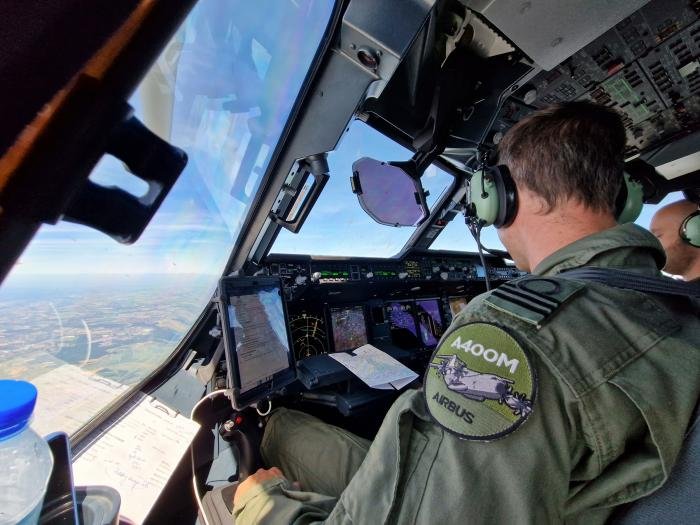
A trio of non-European customers have joined the programme, with eight orders from Malaysia (four), Indonesia (two) and Kazakhstan (two). Airbus anticipates that more new international orders will be received in the coming years.
France: first to accept, first to deploy
France was the initial nation to take delivery of an A400M, receiving its first example, 0007/F-RBAA (c/n 007), on August 1, 2013. The French ordered 50 A400Ms and, at present, operates 23 of them in a tactical and strategic role with air-to-air capability. Two units – Escadron de Transport (ET) 1/61 ‘Touraine’ and ET 4/61 ‘Bearn’ – fly the type from Orleans-Bricy Air Base (BA123), 65 miles south of Paris.
France was quick to deploy the A400M, dispatching the aircraft on its first operational mission on December 29, 2013, just months after its delivery. It was sent to Mali for Operation Serval, now called Operation Barkhane. The following year, ET 1/61 deployed with the A400M to the Middle East for Operation Chammal, France’s contribution to the war against Islamic State (IS). The A400M operated from Prince-Hassan AB in Jordan to multiple locations in support of the deployed fast jets.
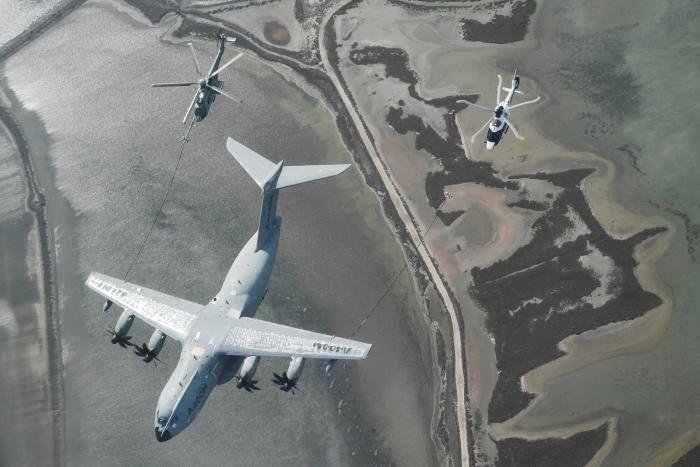
French A400Ms were involved in the evacuation of Afghanistan in August 2021, dubbed Operation Apagan in France. During an intensive week, a trio of A400Ms performed 21 flights and evacuated almost 3,000 Afghan and French nationals from Kabul. A similar non-combatant evacuation operation (NEO) was conducted in Sudan – the type’s ability to respond quickly was demonstrated by France being the first nation to land at Wadi-Seidna Air Base, just north of Khartoum, as part of Operation Sagittaire. In all, seven flights lifting civilians to Djibouti were conducted. France also delivered humanitarian aid to Gaza in November 2023 using two of its A400Ms.
The French Air and Space Force’s A400Ms are able to both provide and receive fuel in-flight. In 2023, a French test and evaluation crew carried out air-to-air refuelling (AAR) trials with RAF Voyager aircraft from RAF Brize Norton. Several sorties were flown with a member of 206 Test and Evaluation Squadron on board the A400M, training the French crew to perform AAR with the RAF. The French used the A400M’s underwing fuel pods to refuel Dassault Rafale and Mirage fighters, as well as other transport aircraft by using the centreline hose drum unit. These test flights were conducted to gain certification in 2018, while in 2021 France also completed drills for low- and high-level refuelling of H225M Caracal helicopters.

Turkey: first to complete fleet
Turkey was the second nation to receive an A400M, doing so on April 4, 2014. It was also the first operator within the Euroflag group to take delivery of its entire complement of A400Ms, with ten examples accepted by late 2022. These A400Ms are operated by 221 ‘Esen’ Filo at the 12th Air Transport Main Base in Erkilet, Kayseri in Anatolia.
The Turkish fleet has been busy during its decade of service. Almost all were called to action in response to the two earthquakes that struck southern and central Turkey on February 6, 2023, carrying out more than 300 sorties to deliver aid and evacuate citizens. During the COVID-19 pandemic, a Turkish A400M delivered over 250,000 items of personal protective equipment (PPE) to the UK, landing at RAF Brize Norton with 50,000 facemasks, 100,000 surgical masks and 100,000 protective suits.
Like many other A400M operators, Turkey deployed its examples during the evacuation of Kabul in August 2021. The air arm completed its NEO mission within 48 hours, airlifting thousands of civilians out of the Afghan capital and into safety in Islamabad, Pakistan. Additionally, a pair of A400Ms were dispatched to Port Sudan for that evacuation mission.

Two Turkish A400Ms became caught up in Russia’s invasion of Ukraine in February 2022. The aircraft, 17-0080 (c/n 080) and 18-0093 (c/n 093), had landed at Kyiv Boryspil Airport shortly after midnight on February 24, 2022, reportedly transporting Bayraktar unmanned air systems. However, as the four-engined transports touched down at Kyiv, Russia launched its invasion of the country. With a war raging around them, it would take until December 20 – 299 days later – for the duo to return to Turkey.
UK: longest non-stop flight
The UK originally placed an order for 27 A400Ms, but due to budget cuts this was reduced to 22. Entering RAF service in November 2014, with deliveries concluding in May 2023, the A400Ms – or Atlas C1 in RAF service – provide both tactical and strategic airlift capabilities to the UK military and its partners.
The A400Ms operate from RAF Brize Norton, Oxfordshire, home of UK Air Mobility Command. Four units operate the Atlas, split equally between frontline divisions (30 Squadron and LXX Squadron), an operational conversion unit in XXIV Sqn and 206 Test and Evaluation Squadron, the RAF’s heavy aircraft test unit.
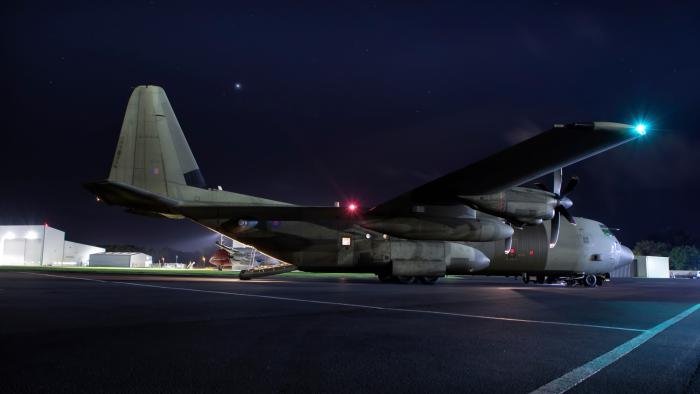
The A400M came under scrutiny even before it had entered service with the RAF due to the highly debated withdrawal of C-130Js, with debate over whether it was capable of taking over all of the Hercules’ mission tasks. In fact, the Atlas offers several advantages over the C-130J, including a 37-tonne payload – 15 tonnes greater than its predescessor, albeit slightly more than half of the C-17A Globemaster III’s payload. Additionally, the Atlas’s larger fuselage means it can transport helicopters such as the Apache and Puma, which the C-130 could not, or carry an additional pallet of cargo over greater distances.
In the summer of 2023, the RAF broke a record for the type at the start of Exercise Mobility Guardian 23. An RAF Atlas C1, ZM420 (c/n 056), departed RAF Brize Norton as ASCOT4514 on a 22-hour flight to Guam in the Western Pacific. The aircraft was refuelled by RAF Voyagers on three occasions: once over the Atlantic by an RAF Voyager flying from Brize Norton, then twice more, over Alaska and the Pacific Ocean by another RAF Voyager operating out of Eielson Air Force Base, Alaska. Another record was broken during this sortie as the route took the aircraft closer to the North Pole than any other A400M before. The Atlas gained an AAR capability in October 2021, when ZM406, operated by a crew from 206 Sqn, was refuelled for the first time by an RAF Voyager. The type first conducted AAR operationally while on a mission to the Falklands in August 2022.
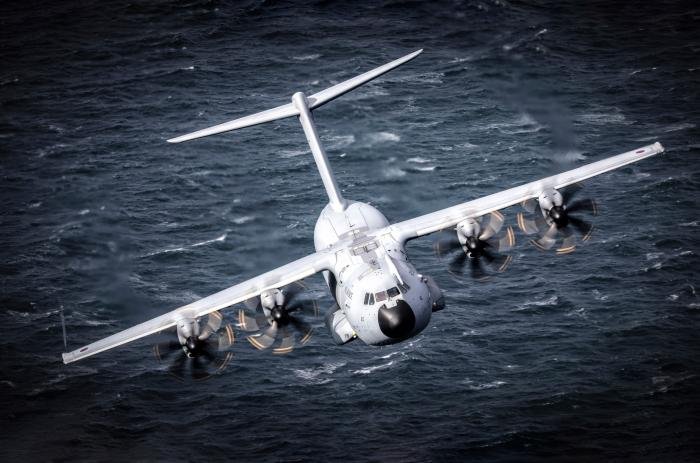
The Atlas became operational in March 2015, its first task being to airlift cargo to RAF Akrotiri, Cyprus. Two years later, RAF A400Ms debuted in a major humanitarian airlift task, with ZM414 (c/n 047) and ZM416 (c/n 058) deploying to the Caribbean for Operation Ruman after Hurricane Irma struck Barbuda, Saint Barthelemy, Saint Martin, Anguilla and the Virgin Islands. An additional benefit of deploying the Atlas C1 to the Caribbean was the need for just one refuelling stop compared to three for the C-130J.
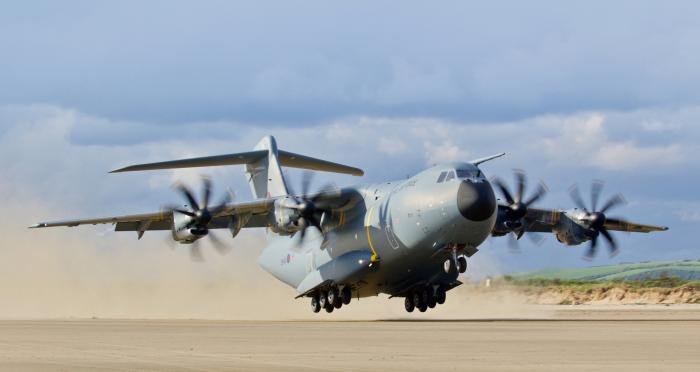
In 2018, ZM412 (c/n 042) was deployed as part of Operation Rakeful, delivering 17.5 tonnes of aid, including included shelter kits, delivery trucks and air cargo handling equipment, to areas affected by the Indonesian tsunami. The same year, the A400M took over the C-130’s contribution to the British Forces South Atlantic Islands mission, comprising transport, maritime patrol, medevac and search and rescue taskings in and around the Falklands. In 2019, the RAF’s first Atlas, ZM400 (c/n 015), was sent to Mozambique to carry 20 tonnes of aid after Cyclone Idai, one of the worst tropical cyclones on record, struck Malawi, Mozambique and Zimbabwe.
A year later, the RAF supported a new British Army UN Force deployment to Mali during COVID-19. During the pandemic, the Atlas fleet proved vital, acting as the national stand-by aircraft to transfer critically ill patients – an A400M was ready to deploy within a three-hour window in a medevac configuration – akin to a flying intensive care unit for up to four patients – with a critical care team on board. LXX Squadron also performed several flights to Turkey to collect PPE, delivered a 2,400-litre oxygen tank to the Falklands and ferried 880 AstraZeneca vaccines to Ascension Island.
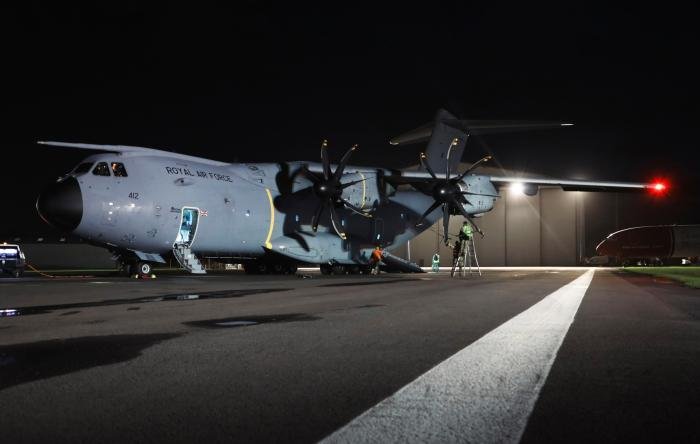
As with other countries, the RAF’s Atlas fleet played a major role in Operation Pitting, the evacuation of Kabul – the UK’s biggest airlift operation since the Berlin Blockade. The fleet accumulated 225 flying hours across 31 flights, during which it transported 3,538 evacuees, 428 UK military personnel and 113,000kg of freight. It is understood that, on one sortie, an Atlas carried 213 people, far in excess of the 160 passengers it is cleared for.
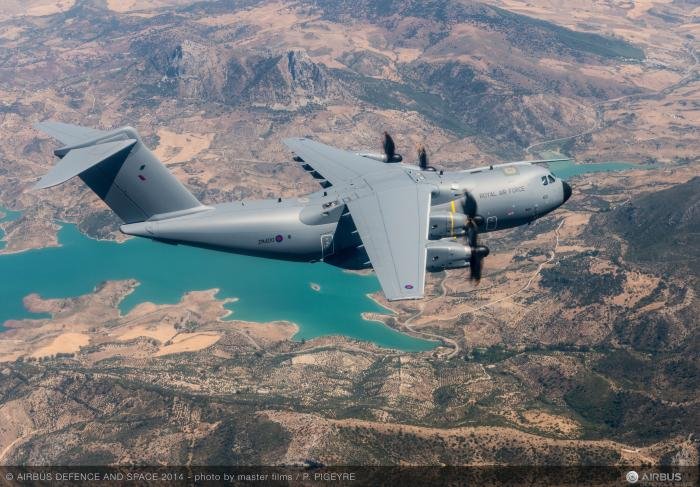
The A400M’s enhanced vision systems and its augmentation of night-vision goggles enables crews to conduct their missions in far more challenging environments than were anticipated. On one occasion, an Atlas was able to land without the runway lights illuminated and with a thick blanket of smoke over the airfield after a bomb was detonated close to Kabul Airport. The RAF also used three Atlas aircraft – ZM400, ZM408 and ZM411 – to airlift more than 2,000 individuals to RAF Akrotiri, Cyprus, during its NEO mission in Sudan, known as Operation Polar Bear.
Engine testing
On December 17, 2008, a highly modified Lockheed C-130K Hercules W.2, XV208 (382-4223), departed from Cambridge Airport in the UK equipped with a Europrop International TP400 on the first of 18 test flights. The testbed – nicknamed Snoopy from its time with the Meteorological Research Flight – had been strengthened with struts supporting the port wing and the TP400 truboprop in the number two position. Once tests had been completed, the aircraft was stored before being scrapped in 2015.
First flight
The first Airbus A400M, F-WWMT (c/n 001), made its maiden flight on December 11, 2009. The aircraft took off from San Pablo airport near Seville, Spain, at 10:15hrs local time and returning at 14:00hrs local after a flight of 3h 45min. The test airframe reached a maximum speed of 300kts during the flight, which was mostly conducted at altitudes between 8,000ft and 10,000ft, but it also went up to 18,000ft for a pressurisation test. This particular aircraft was retired from duties in November 2013 and was later preserved at Aeroscopia, near Toulouse Blagnac Airport, France.
